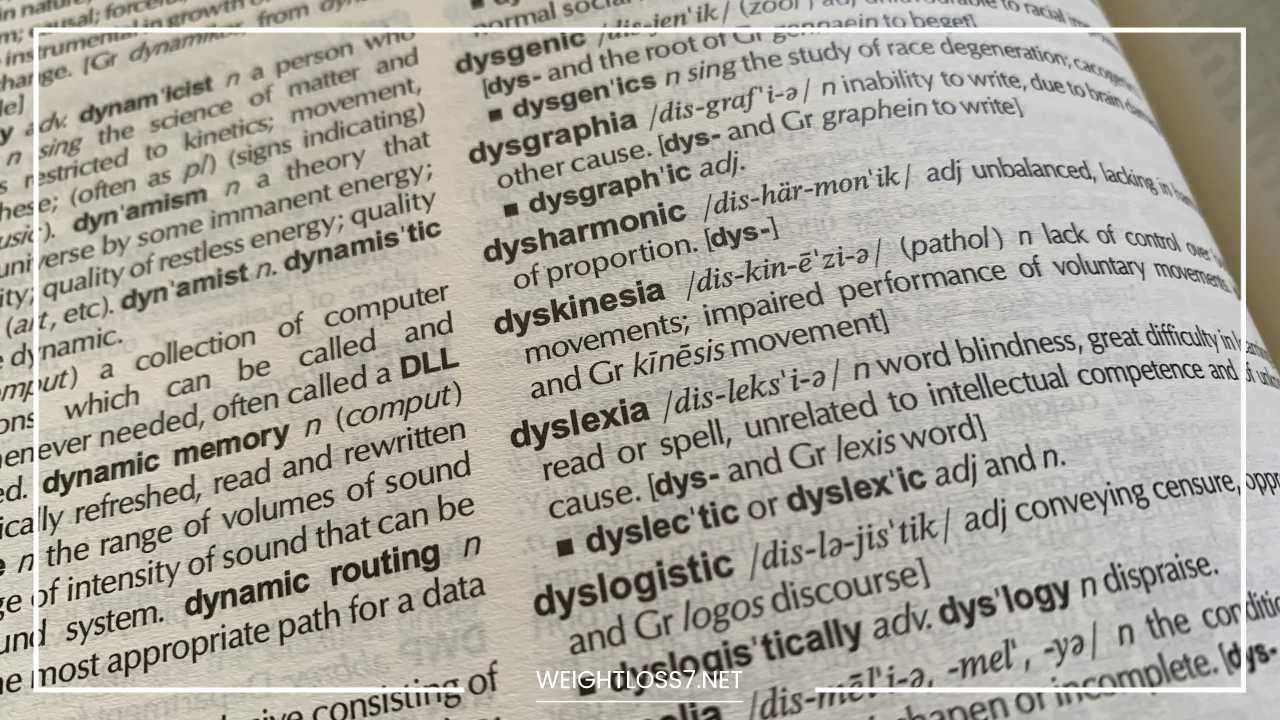What is Dyslexia: Symptoms and Treatment

Dyslexia
What is Dyslexia: Symptoms and Treatment
Dyslexia is a common learning difference that impacts millions of people worldwide. It’s characterized by difficulty with reading, spelling, writing, and processing language.
But here’s the key takeaway: despite these challenges, individuals with dyslexia are often highly intelligent and possess remarkable creativity.
This comprehensive blog post delves into the world of dyslexia, exploring:
- What is Dyslexia?
- Unveiling the Symptoms of Dyslexia Across Different Age Groups
- Exploring the Different Types of Dyslexia
- Demystifying the Causes of Dyslexia
- The Importance of Diagnosis: How Dyslexia is Identified
- Effective Treatment Options for Dyslexia
- Thriving with Dyslexia: Strategies for Living Well
- Resources for People with Dyslexia and Their Loved Ones
What is Dyslexia?
Dyslexia isn’t a reflection of lower intelligence. It’s a neurological difference in the way the brain processes language. People with dyslexia have difficulty connecting letters to sounds (phonemic awareness) and decoding written words (fluency). This can make reading, spelling, and writing challenging.
However, dyslexia doesn’t affect all areas of learning. Individuals with dyslexia often excel in visual-spatial skills, reasoning abilities, and creative thinking. Many famous figures, including actors, artists, and entrepreneurs, have thrived despite having dyslexia.
Here are some inspiring examples:
- Whoopi Goldberg (Actress): An outspoken advocate for dyslexia awareness, Goldberg highlights the unique strengths that come with the condition.
- Tom Cruise (Actor): Despite his struggles with reading fluency in childhood, Cruise has become a Hollywood A-lister.
- Agatha Christie (Novelist): The “Queen of Crime” is believed to have had dyslexia, which may have fueled her creative storytelling.
These success stories demonstrate that dyslexia doesn’t have to limit one’s potential.
Unveiling the Symptoms of Dyslexia Across Different Age Groups
Dyslexia symptoms can vary depending on age and the severity of the condition. Here’s a detailed breakdown of common signs to look for across different age groups:
Early Childhood (Preschool – Kindergarten)
- Difficulty learning the alphabet letters and their sounds.
- Challenges with rhyming words or identifying words that sound alike (e.g., bat/cat).
- Trouble with sequencing sounds in words (e.g., saying /s/ /a/ /t/ instead of “sat”).
- Delays in speech development, such as forming words or expressing oneself clearly.
- Difficulty following simple instructions, especially those involving multiple steps.
School Age (Grades 1-3)
- Reading significantly below grade level compared to peers.
- Difficulty with decoding unfamiliar words, often resorting to guessing or sounding them out laboriously.
- Slow and labored reading, lacking fluency and automaticity.
- Frequent mixing up of letters with similar shapes (e.g., confusing “b” with “d” or “p” with “q”).
- Problems with spelling even simple words, often misspelling words phonetically or omitting letters.
- Difficulty following written instructions, leading to confusion and frustration.
- Avoiding activities that involve reading, such as story time or independent reading assignments.
Teens and Adults
- Slow reading speed, impacting comprehension and enjoyment of reading.
- Poor spelling and grammar, making written communication challenging.
- Difficulty summarizing what they’ve read, struggling to grasp the main ideas and key points.
- Trouble understanding complex written instructions, leading to mistakes or incomplete tasks.
- Mispronouncing words, particularly unfamiliar or multisyllabic words.
- Difficulty taking clear and concise notes, hindering learning in academic settings.
- Problems with specific aspects of math, particularly word problems that require reading comprehension.
- Avoiding activities that involve reading or writing, leading to social isolation or career limitations.
It’s important to remember that these are just general indicators. Dyslexia can manifest differently in each person. If you suspect yourself or someone you know might have dyslexia, it’s crucial to seek a professional evaluation for a proper diagnosis.
Exploring the Different Types of Dyslexia
There are different subtypes of dyslexia, each affecting a specific aspect of language processing. Here’s a closer look at the most common ones:
- Phonemic Dyslexia: This is the most common type. People with phonemic dyslexia have difficulty connecting letters to sounds. This makes it hard to sound out unfamiliar words and decode written language.
- Phonological Dyslexia: Individuals with this subtype struggle with manipulating the sounds of language. They may have trouble rhyming, blending sounds together (e.g., /s/ /t/ /op/ to form “stop”), or segmenting words into individual sounds (e.g., identifying the separate sounds in “cat”). This can make it challenging to learn new vocabulary and understand the structure of words.
- Visual Dyslexia: This subtype is characterized by difficulty recognizing written words. People with visual dyslexia may mix up words that look similar (e.g., “was” and “saw”), struggle with visual memory, or have problems with visual tracking (following lines of text while reading).
- Auditory Dyslexia: Involves challenges processing spoken language. Individuals with auditory dyslexia may have difficulty following instructions, understanding lectures, or remembering spoken information.
- Mixed Dyslexia: This is the most common scenario, where a person exhibits characteristics of several different subtypes.
Demystifying the Causes of Dyslexia
The exact cause of dyslexia remains unknown, but it’s believed to be a complex interplay of genetic and neurological factors. Here’s a deeper dive into the potential causes:
- Genetics: Research suggests a strong genetic link to dyslexia. If a parent or close relative has dyslexia, there’s a higher chance of a child inheriting the condition.
- Brain Differences: Studies using brain imaging have shown differences in the structure and function of the brain in people with dyslexia. These differences may involve areas responsible for language processing, phonological awareness, and visual-spatial processing.
- Environmental Factors: While not a direct cause, certain environmental factors like prenatal exposure to toxins or early childhood experiences with limited language stimulation might play a role in the development of dyslexia.
The Importance of Diagnosis: How Dyslexia is Identified
There’s no single test for dyslexia. Diagnosis typically involves a comprehensive evaluation by a qualified professional, such as a psychologist, educational specialist, or neuropsychologist. The evaluation may include:
- Standardized Tests: These tests assess reading, spelling, and writing skills compared to standardized norms. They help identify areas of difficulty and measure the severity of dyslexia.
- Cognitive Assessments: These evaluations assess language processing, memory, attention, and processing speed. This helps identify underlying cognitive factors that might be contributing to reading difficulties.
- Educational History Review: Reviewing school records and talking to teachers can provide valuable insights into a student’s academic performance, reading behaviors, and any interventions that have been attempted.
Early diagnosis is crucial for getting appropriate support and interventions. If you suspect your child might have dyslexia, talk to their pediatrician or teacher for a referral to a specialist. Early intervention can significantly improve a child’s academic success and overall well-being.
Effective Treatment Options for Dyslexia
There’s no cure for dyslexia, but there are effective treatments that can help people manage their symptoms and improve their reading, writing, and spelling skills. Here are some of the most common approaches:
- Multisensory Instruction: This method uses a combination of visual, auditory, and kinesthetic approaches to teach reading and spelling skills. For example, students may use manipulatives like letter tiles while learning sounds, trace letters while saying their names, or engage in activities that involve movement and sound to reinforce learning.
- Orton-Gillingham Approach: This is a structured and explicit program that breaks down reading skills into smaller, teachable components. It emphasizes phonemic awareness, phonics, decoding, and encoding skills in a sequential and cumulative manner.
- Structured Literacy Programs: These programs provide a systematic and explicit approach to teaching reading skills, often incorporating elements of the Orton-Gillingham approach. They are designed to be effective for students with dyslexia and other reading difficulties.
- Assistive Technology: Tools like audiobooks, text-to-speech software, and spell-checkers can be invaluable for people with dyslexia. Audiobooks allow individuals to access information without struggling with reading. Text-to-speech software can convert written text into spoken word, making reading materials more accessible. Spell-checkers can help identify and correct spelling errors, improving written communication.
- Cognitive Strategies: Techniques like chunking information (breaking down large amounts of information into smaller, more manageable pieces), using graphic organizers (visual aids to organize information), and self-monitoring (paying attention to one’s learning process and making adjustments as needed) can help people with dyslexia improve memory, organization, focus, and overall learning efficiency.
Thriving with Dyslexia: Strategies for Living Well
A diagnosis of dyslexia doesn’t have to define your potential. With the right support, individuals with dyslexia can achieve great things. Here are some strategies for living well with dyslexia:
- Find a Support System: Surround yourself with people who understand and support you. This could include family, friends, teachers, tutors, or a therapist. Having a strong support system can make a big difference in your confidence and overall well-being.
- Embrace Your Strengths: Dyslexia is often accompanied by unique strengths. People with dyslexia may excel in visual-spatial reasoning, problem-solving, creativity, critical thinking, or kinesthetic learning. Identifying and nurturing these strengths can boost your confidence and self-esteem.
- Advocate for Yourself: Don’t be afraid to speak up for yourself and your needs. Whether in school, at work, or in social situations, explain your dyslexia and request accommodations that can help you succeed. There are legal protections in place for individuals with disabilities, so don’t hesitate to utilize these resources.
- Develop Self-Advocacy Skills: Learn strategies for explaining your dyslexia to others and requesting appropriate accommodations. This could involve practicing communication skills, role-playing scenarios, and developing a clear understanding of your specific needs.
- Find a Mentor: Connecting with someone who has dyslexia and has achieved success can be incredibly inspiring. A mentor can offer guidance, support, and share valuable tips for navigating life with dyslexia.
- Develop Positive Self-Talk: Challenge negative thoughts and self-doubt. Focus on your accomplishments and celebrate your progress. Positive self-talk can significantly improve your confidence and motivation.
- Explore Different Learning Styles: People with dyslexia may learn best through visual aids, hands-on activities, or auditory input. Experiment with different learning styles to find what works best for you.
- Utilize Technology: Embrace assistive technology that can make learning and communication easier. Explore options like audiobooks, text-to-speech software, mind mapping tools, and dictation software.
- Celebrate Your Uniqueness: Dyslexia is a part of who you are, but it doesn’t define you. Focus on your unique strengths and talents, and celebrate your individual journey.
Resources for People with Dyslexia and Their Loved Ones
There are many resources available to support people with dyslexia and their loved ones. Here are a few helpful organizations and websites:
- International Dyslexia Association (IDA): https://dyslexiaida.org/
- The IDA is a leading organization dedicated to providing information, resources, and advocacy for individuals with dyslexia. They offer a wealth of information, including publications, webinars, and a directory of professionals who specialize in dyslexia.
- Learning Disabilities Association of America (LDA): https://ldaamerica.org/
- The LDA is a national organization that provides support and resources for individuals with all types of learning disabilities, including dyslexia. They offer resources for parents, educators, and individuals with dyslexia.
- National Center for Learning Disabilities (NCLD): https://ncld.org/
- The NCLD is a non-profit organization that provides resources and advocacy for individuals with learning disabilities. They offer information on dyslexia, including resources for parents, educators, and adults with dyslexia.
- Understood.org: https://www.understood.org/
- Understood.org is a website that provides information and resources for parents of children with learning and attention issues, including dyslexia. They offer practical advice, strategies, and support for parents who are helping their children navigate dyslexia.
- Reading Rockets: https://www.readingrockets.org/
- Reading Rockets is a website that provides research-based information and resources on reading difficulties. They offer information on dyslexia, including resources for parents, educators, and individuals with dyslexia.
By understanding dyslexia, seeking appropriate support, and embracing their strengths, individuals with dyslexia can thrive and achieve their full potential.

















